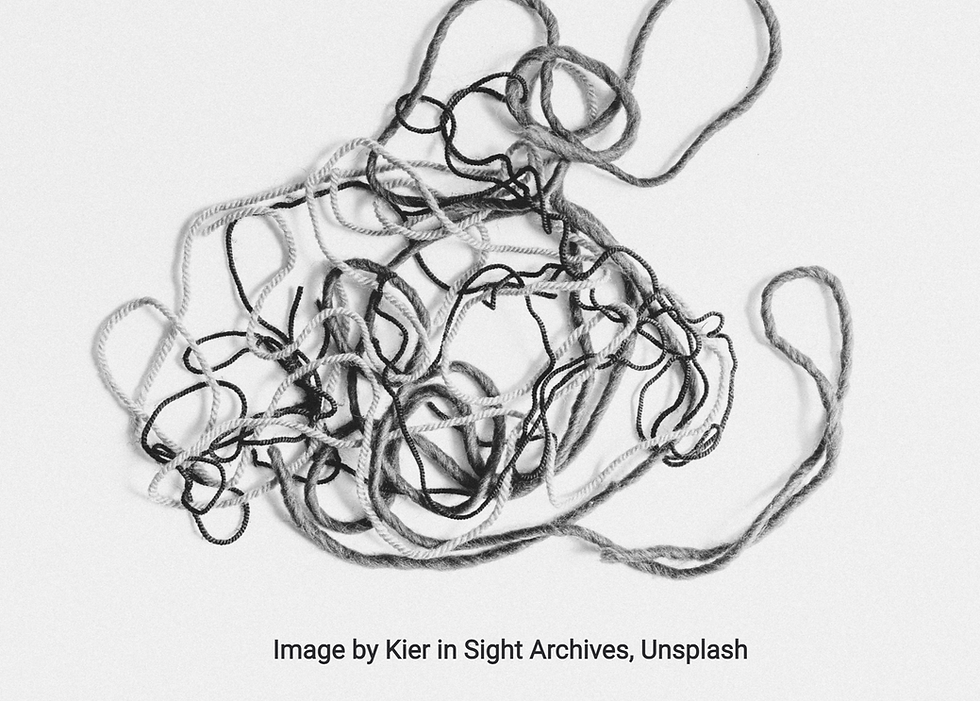It's All In Your Perspective
- Louise Carnachan

- Apr 9, 2024
- 3 min read

I’d just finished hanging three reproductions I’d purchased at the Miro Museum in Barcelona. I stepped back to view my labors and thought, “Is the orange one positioned right?” The problem with surrealism is that it’s not always clear which end is up.
I took a photo and WhatsApped my artist friend. Yes, she confirmed, it was off by 90 degrees. I’d thought maybe 180 degrees but kept that to myself. And, she noted, it wasn’t straight on the mat, a problem I didn’t know I had. A few minutes later came another message that the green one next to it was upside down. For those keeping score, of the three pictures I had so lovingly placed on the wall, only the one with French writing on it was hung properly. So much for my acumen.
I imagine artists welcome unique emotional reactions to their work, however they have every right to expect the proper orientation in its display. I took solace that museums have been caught showing the works of Rothko, Matisse, Van Gogh, O’Keeffe and Jackson Pollock sideways or upside down. (Although, with Pollock it’s completely understandable.) For well-known institutions, these are high stakes goofs—at my house, not so much.
Those who trade in words (and that would be most of us) know misconstrued meaning can occur because of the receiver’s perception. For example, an author intends to express a specific message on the page but what’s understood is truly in the mind of the beholder. An individual’s off-base take could be an anomaly but when multiple people don’t catch the drift, it’s the writer who’s been unclear. Their mental picture was not that obvious.
As part of my job, I used to write instructions for processes. After getting some unexpected results, I realized a beta tester was required. It’s really easy to skip steps when you already know what to do—which you’ve no doubt experienced with user manuals. Test for completeness and accuracy before distributing.
For important business messages, someone other than the author needs to assure that what was meant got on the page. A person who doesn’t have inside knowledge is the perfect proof reader. Without that check, the opportunity for the meaning to be perceived upside down or sideways is far too great. And damage control can be very expensive, literally and figuratively.
Many of us have learned through the School of Hard Knocks that missteps in conveying tone is particularly problematic. You want really good advice and editing when it comes to sensitive subjects. Use caution in the decision to transmit difficult messages through writing versus a conversation.
Touchy information (i.e., layoffs, changes in structure, negative performance feedback) should always be communicated as personally as possible. “Personally” means be in a room together because that’s where you address emotional reactions and answer questions. Use Zoom or phone only if you must. Never send a letter and expect that you’ll talk later to clear things up; the damage may be irreparable by then. If you want to learn just how fast the grapevine works, that’ll do it.
However, written follow-up documentation is perfectly acceptable. Stressful conversations can erode one’s ability to comprehend, so back up is important. You never know when a summary of the important points will be required in the future.
As for me, I just didn’t know what I didn’t know until I’d finished my project then questioned the results. My blunders would have been averted with research. But I assumed I knew—and there’s the rub. It’s when we’re certain we know, we make mistakes. Of course, my home décor isn’t that important but when the stakes are high, such as conveying critical information, please have another set of eyes review your work.
Apparently, I need repetition to learn. I hung one more Miro print and again was pleased with how it looked—then had second thoughts. I called up the image on my phone, something I should have done prior to placing the picture in the frame. Of course, it was upside down.



Comments